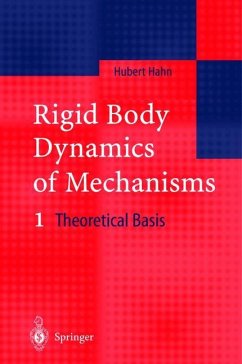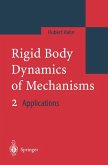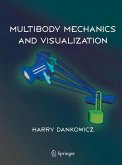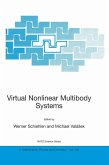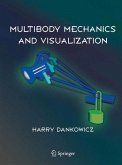This monograph presents an introduction into basic mechanical aspects of mechatronic systems for students, researchers and engineers from industrial practice. An overview over the theoretical background of rigid body mechanics is given as well as a systematic approach for deriving and solving model equations of general rigid body mechanisms in the form of differential-algebraic equations (DAE). The objective of this book is to prepare the reader for being capable of efficiently handling and applying general purpose rigid body programs to complex mechanisms. The reader will be able to set up symbolic mathematical models of planar and spatial mechanisms in DAE-form for computer simulations, often required in dynamic analysis and in control design.
The dynamics of mechanical rigid-body mechanisms is a highly developed discipline. The model equations that apply to the tremendous variety of ap plications of rigid-body systems in industrial practice are based on just a few basic laws of, for example, Newton, Euler, or Lagrange. These basic laws can be written in an extremely compact, symmetrical, and esthetic form, simple enough to be easily learned and kept in mind by students and engi neers, not only from the area of mechanics but also from other disciplines such as physics, or mathematics, or even control, hydraulics, or electronics. This latter aspect is of immense practical importance since mechanisms, ma chines, robots, and vehicles in modern industrial practice (sometimes called mechatronic systems) usually include various subsystems from the areas of hydraulics, electronics, pneumatics, informatics, and control, and are built by engineers trained in quite different disciplines. Conventional methods of modeling rigid-body mechanisms In contrast to the comparatively simple and easy-to-learn basic laws of rigid body systems, the practical application of these laws to the planar or spatial motions of industrial mechanisms rapidly leads to extremely lengthy and complex equations of motion, where the form and complexity of the model equations depends critically on the choice of the model coordinates. Until recently this had the following consequences: 1. A large variety of specialized techniques have been developed, each suit able for efficiently modeling a special-purpose mechanism.
The dynamics of mechanical rigid-body mechanisms is a highly developed discipline. The model equations that apply to the tremendous variety of ap plications of rigid-body systems in industrial practice are based on just a few basic laws of, for example, Newton, Euler, or Lagrange. These basic laws can be written in an extremely compact, symmetrical, and esthetic form, simple enough to be easily learned and kept in mind by students and engi neers, not only from the area of mechanics but also from other disciplines such as physics, or mathematics, or even control, hydraulics, or electronics. This latter aspect is of immense practical importance since mechanisms, ma chines, robots, and vehicles in modern industrial practice (sometimes called mechatronic systems) usually include various subsystems from the areas of hydraulics, electronics, pneumatics, informatics, and control, and are built by engineers trained in quite different disciplines. Conventional methods of modeling rigid-body mechanisms In contrast to the comparatively simple and easy-to-learn basic laws of rigid body systems, the practical application of these laws to the planar or spatial motions of industrial mechanisms rapidly leads to extremely lengthy and complex equations of motion, where the form and complexity of the model equations depends critically on the choice of the model coordinates. Until recently this had the following consequences: 1. A large variety of specialized techniques have been developed, each suit able for efficiently modeling a special-purpose mechanism.
From the reviews: "The present book is a very important and useful introduction of mechanical aspects of mechatronic systems. This book is very useful for undergraduate students of mechanical engineering, control engineering, civil engineering, electrical engineering, mathematics and physics. This book is also very useful for practicing engineers since with this book they have the opportunity of a systematic choice of notation, of an algebraic formulation of all the expressions, of a possibility of direct implementation in a computer and finally of an application ... ." (T. E. Simos, Journal of Computational Methods in Sciences and Engineering, Vol. 3 (1), 2003) "This monograph presents an introduction into basic mechanical aspects of mechatronic systems for students, researchers and engineers from industrial practice. An overview over the theoretical background of rigid body mechanics is given as well as a systematic approach for deriving model equations of general rigid body mechanisms in the form of differential-algebraic equations (DAE). Objective of this book is to prepare the reader for being capable of efficiently handling and applying general purpose rigid body programs to complex mechanics ... ." (European Journal of Mechanical and Environmental Engineering, Vol. 47 (2), 2002)

